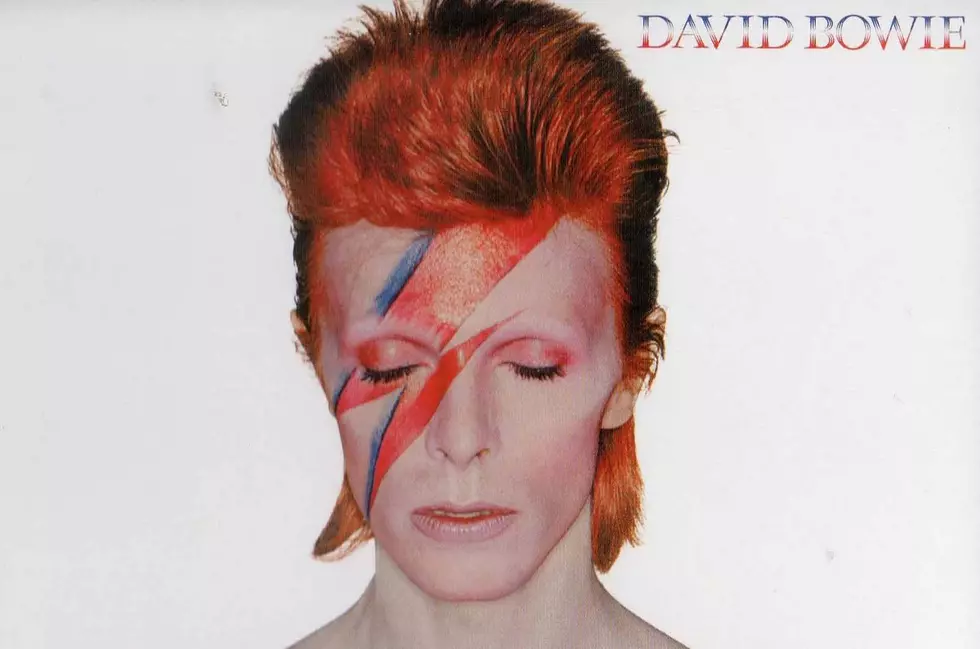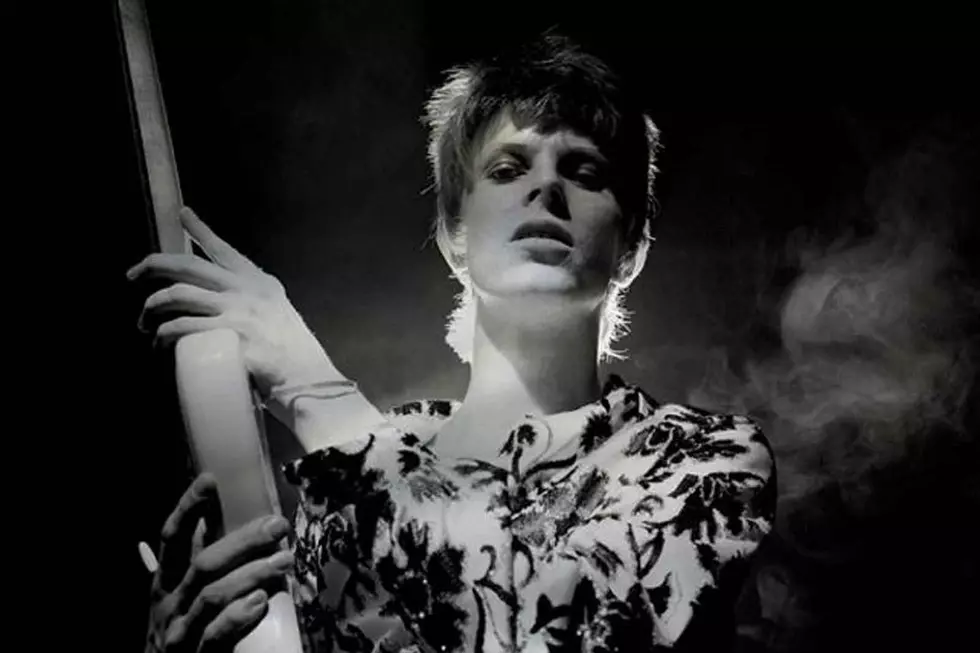
How David Bowie Returned, Ziggy-Like, for ‘Aladdin Sane’
Ziggy Stardust didn't call it quits. He just changed his name and clothes.
Less than a year after David Bowie debuted Ziggy Stardust, the character that made him famous in 1972, and a few months before he shoved the character in a closet, he returned on record with a variation on his alter-ego rock 'n' roll star from outer space.
The Rise and Fall of Ziggy Stardust and the Spiders From Mars, which was released in June 1972, finally broke Bowie, who had been kicking around for almost a decade and with four solo albums to his name, to the mainstream. The album, and the tour supporting it, featured Bowie assuming the persona of the title character, a bisexual and androgynous rock star from another planet.
By July 1973, Bowie – worn out from a nonstop tour schedule and from playing a loose variation of himself onstage every night – had grown tired of Ziggy and retired him. A few months earlier, on April 20, 1973, he released the follow-up to his hit album, and while the figure on the cover looked vaguely familiar, Bowie insisted it was a brand new character named Aladdin Sane.
Watch David Bowie's 'The Jean Genie' Video
Fans immediately saw through it. Aladdin Sane (or, more pointedly, "a lad insane") was Bowie's not-so-subtle shifting of personas to keep himself from getting, as he sang in "Ziggy Stardust," too "sucked up into his mind." Aladdin Sane, the character, was Bowie stepping back a bit, grounding himself to Earth. But there was no pulling back by this point; Aladdin Sane, the album as well as the character, was pretty much Ziggy Stardust, the album and the character, reborn. Bowie even referred to the album as "Ziggy goes to America," partly inspired by the fact that many of the songs were written while he was touring the States.
Most of the material was recorded in the fall of 1972 and winter 1973, during rare breaks from the Ziggy Stardust Tour. The bulk of the sessions was cut in early December – between North American and European dates – and in mid-January, before Bowie and his band returned to the U.S. for another month of shows.
Like The Rise and Fall of Ziggy Stardust and the Spiders From Mars, Aladdin Sane was co-produced by Bowie and Ken Scott at London's Trident Studios (with some recording also done in New York and Nashville). The band was made up of the same group – guitarist Mick Ronson, bassist Trevor Bolder and drummer Mick "Woody" Woodmansey – used on the Ziggy Stardust LP and during the tour. So, the music was familiar and the results were produced quickly, resulting in an album that sounded a lot like its predecessor.
Listen to David Bowie's 'Panic in Detroit'
The album's best songs – "Drive-In Saturday," "Panic in Detroit" and "The Jean Genie" – fit snugly within Ziggy's spandex-clad worldview, which helped make Aladdin Sane Bowie's highest-charting U.S. LP at the time (it reached No. 17 and was topped the following year by Diamond Dogs, his first Top 10 entry). It also became the first of his nine chart-toppers in his native U.K.
But Bowie also dug deeper into the avant-garde and jazz shadings that would fuel some of his later records (see the title track). In addition to the music's legacy, the album's cover art became one of Bowie's most iconic images. The lightning bolt that splits his face in half was partly inspired by the way Bowie felt he was being pulled in different directions during this hectic time in his life, and a perfect visual complement to the album's title pun. More than all of this, Aladdin Sane clinched Bowie's standing in the big leagues.
Next up: Finally putting Ziggy Stardust to rest and moving on to even grander projects, in a career that had many more to come.
The Most Shocking Rock Star Fashion Reinventions
More From Ultimate Classic Rock









